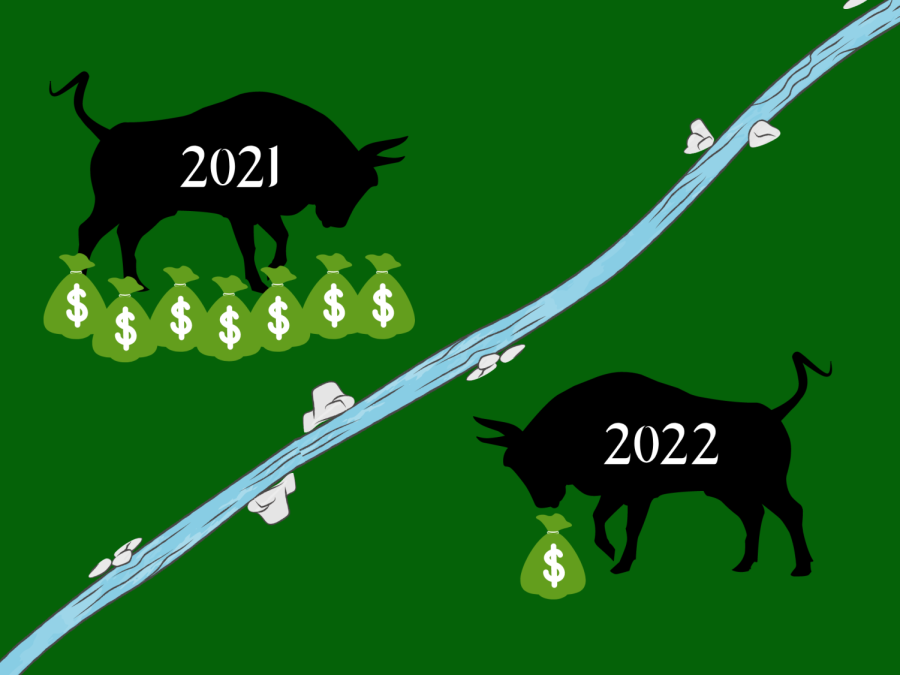Initial public offerings decline as markets remain volatile
November 13, 2022
As the American economy remains volatile this year, initial public offerings and their market valuations indicate uncertainty persists in the financial markets, in contrast to strong consumer sentiment last year.
The U.S. stock market saw 1,035 IPOs in 2021, allowing for a record level of proceeds. Companies raised more than $155 billion that year by going public, according to data from Ernst & Young and Dealogic.
In contrast, the market saw only 172 IPOs this year, as of Nov. 12. This is a 81.5% decline from the previous year, with companies going public raising only $4.8 billion so far this year, according to data.
An IPO refers to the process a private corporation goes through to offer its shares to the public in a new stock issuance for the first time. It allows a company to raise equity capital from public investors.
Market valuation commonly refers to the market capitalization of a publicly traded company. It is calculated by multiplying the number of a company’s outstanding shares by the current share price.
The IPO decline is attributed to a variety of factors.
For one, more special purpose acquisition companies, which are also known as “shell companies,” went public. The Nasdaq composite saw 613 SPACs go public in 2021 and raise $145 billion in value, which was up 91% from 2020. The Securities and Exchange Commission pushed for more regulation over SPACs this year.
There’s also the Federal Reserve’s quantitative tightening and interest rate hikes this year, which led to a liquidity crunch.
“Inflation was slightly higher than expected in August, keeping the Fed on course for further aggressive rate hikes near-term,” Bill Adams, the chief economist for Comerica Bank, told Forbes.
This makes it difficult for Wall Street to take risks, since it would be deprived of easily earned money. Higher interest rates make borrowing money more expensive.
Given that the markets’ current condition is not favorable for investors to put their savings in, the decline in IPOs is logical.
In the face of inflation and interest rate hikes, investors would turn to safe and profitable stock alternatives, such as companies that aim for growth.
Another factor to consider is the rate of return for IPOs last year.
The rate of return is the net gain or loss of an investment over a specified time period. It is expressed as a percentage of the investment’s initial cost.
Growth stocks increased 36% in 2019, rose 38% in 2020 and grew 27% in 2021. But these stocks fell 30% this year, while value-focused stocks declined 30%.
An investor would not be willing to invest in a product that has either a negative or subdued return. Before betting on their money, institutions and retail investors consider the rate of return into their decision making.
But this factor soured market sentiment unexpectedly. In the short term, the performance of the rate in return does not always have a correlation with a company’s long-term growth prospects, making the market ignore short-term fluctuations.
But this time, markets are struggling to raise money while caught in a perfect storm of inflation, costly interest rates and saving rate changes.
The number of IPOs in 2023 will be looked at more thoroughly. Learning its lesson this year, the markets already established barriers to not let below-average IPOs launch.
The cash produced would then help a company with profitability become apparent either immediately or in the medium term. The financial markets would be able to keep up profitability longer, rather than going through a dry spell of hard cash for short-term profits.







